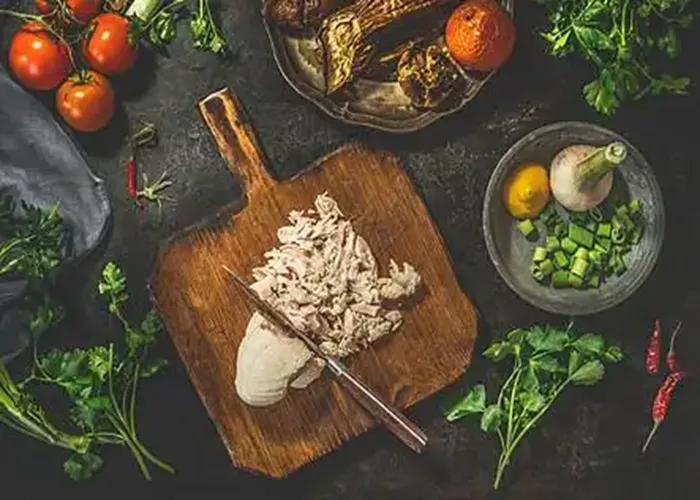Achieving a six-pack isn’t just about hitting the gym with endless crunches—diet plays an essential role in unveiling those toned abs. By incorporating the right nutrient-dense foods, you can reduce body fat, foster muscle growth, and enhance overall well-being. Here’s a look at ten science-backed foods to include in your diet if you’re aiming for a defined midsection.
1. Eggs: The Ultimate Protein Source
Eggs are packed with high-quality protein, offering all nine essential amino acids. These amino acids are crucial for muscle recovery and growth, especially in areas like the abdominal muscles. Research published in the American Journal of Clinical Nutrition indicates that higher protein intake, such as from eggs, supports fat loss while preserving lean muscle mass (Pasiakos et al., 2013). Additionally, eggs contain choline, which aids in fat metabolism.
2. Salmon: Omega-3 Powerhouse
Rich in omega-3 fatty acids and protein, salmon is a perfect choice for promoting muscle development and fat loss. Omega-3s help reduce inflammation, improve fat metabolism, and increase muscle protein synthesis. A study in the Journal of the International Society of Sports Nutrition found that omega-3 supplementation boosts protein consumption’s anabolic response (Smith et al., 2011). Plus, salmon’s vitamin D content plays a key role in both muscle function and fat reduction.
3. Greek Yogurt: Protein and Probiotics in One
Greek yogurt is an excellent source of protein, probiotics, and calcium—each important for building and maintaining lean muscle. The protein helps with muscle repair, and probiotics can improve gut health, which influences body weight regulation. Research from the British Journal of Nutrition links probiotics to reduced body fat and improved weight management (Schwiertz et al., 2016). For the best benefits, opt for plain, unsweetened varieties to avoid unnecessary sugars.
4. Leafy Greens: Nutrient-Dense and Low-Calorie
Spinach, kale, and Swiss chard are full of fiber, vitamins, and minerals, but low in calories. The high fiber content helps you feel full, reducing the risk of overeating, while nitrates found in leafy greens improve oxygen delivery to muscles, enhancing exercise performance. According to a study in the Journal of Applied Physiology, dietary nitrates boost muscular efficiency (Larsen et al., 2007). These greens are key in creating a calorie deficit essential for fat loss.
5. Quinoa: A Complete Whole Grain
Quinoa is a whole grain packed with fiber, protein, and complex carbohydrates. Unlike refined grains, it provides steady energy without causing blood sugar spikes, making it ideal for sustained workouts and fat burning. The Journal of Medicinal Food highlighted quinoa’s fiber content as beneficial for appetite regulation and weight management (Prego et al., 2014). Additionally, it is gluten-free, making it a great option for those with dietary restrictions.
6. Chicken Breast: Lean and Protein-Rich
A staple in many fitness diets, chicken breast is rich in lean protein, essential for muscle recovery and growth. A diet higher in lean protein, such as chicken breast, has been shown to support fat loss and boost metabolic rate, according to a study in Nutrition & Metabolism (Leidy et al., 2015). Grilled or baked chicken breast is an excellent addition to any diet aimed at sculpting a six-pack.
7. Almonds: A Healthy Snack Choice
Almonds are loaded with healthy fats, protein, and fiber, offering a satisfying snack that helps curb hunger. Studies, such as one from the Journal of the American Heart Association, show that almond consumption reduces abdominal fat and improves cholesterol levels (Berryman et al., 2015). Just be mindful of portion control, as almonds are calorie-dense.
8. Sweet Potatoes: Sustained Energy Source
Sweet potatoes are rich in fiber, vitamins, and minerals, offering complex carbohydrates that provide long-lasting energy. Unlike simple carbs, they help prevent blood sugar spikes and contain beta-carotene, an antioxidant that supports overall health. Research in the Journal of Nutrition and Metabolism suggests that consuming low-glycemic foods like sweet potatoes helps regulate appetite and aids weight loss (Holt et al., 1997).
9. Berries: Antioxidant-Rich and Low-Calorie
Berries such as blueberries, strawberries, and raspberries are not only low in calories but also packed with antioxidants, fiber, and vitamins. Their natural sweetness satisfies sugar cravings while promoting fat loss. Studies, including one in Appetite, found that berries improve satiety and reduce calorie intake in subsequent meals (Krop et al., 2015). The antioxidants also combat oxidative stress, which can hinder fat loss.
10. Green Tea: A Metabolism Booster
Green tea is well-known for its metabolism-boosting benefits, thanks to its high levels of catechins and caffeine. These compounds, particularly epigallocatechin gallate (EGCG), promote fat oxidation and thermogenesis. A meta-analysis in the International Journal of Obesity confirmed that green tea catechins contribute to significant reductions in body weight and fat mass (Hursel et al., 2009). Drinking green tea before a workout can also enhance fat burning and performance.
By incorporating these foods into your diet, you’ll fuel your body with the nutrients necessary for fat loss, muscle building, and overall health—helping you get closer to revealing those coveted six-pack abs.
Related Topics:
Can You Have Coffee On The Mediterranean Diet


